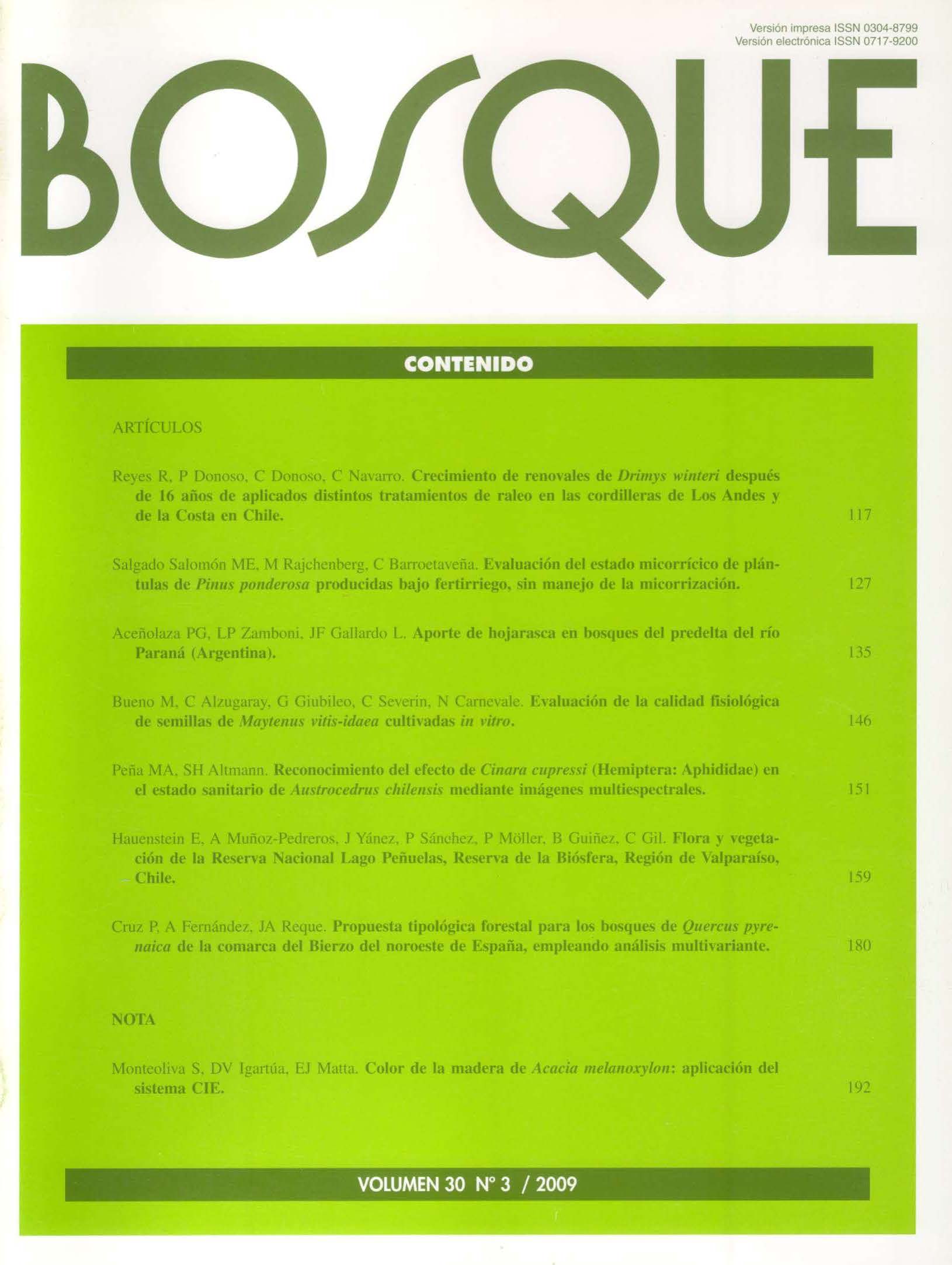Main Article Content
Dec 31, 2009
Abstract
Several reports of tree planters from the Patagonian Andes region of Chubut (Argentina) have pointed out that seedlings of Pinus ponderosa, obligate ectotrophic species, produced in greenhouses with high levels of fertilization without ectomycorrhizal inoculum applications, showed low or null ectomycorrhizal infection at the end of nursery stage but had excellent performance in plantation sites during the first years. This study was planned to evaluate if those seedlings develop mycorrhizal associations once installed in plantations, and if those associations are originated from inoculums acquired in the nursery. Three evaluations were done: 1) analyses of seedlings at the end of nursery period, to evaluate their initial mycorrhizal condition, 2) analyses after 6 month, with seedlings transplanted into pots with semi-sterile substrate, to establish if there exists inoculum in the system that did not express because of the high fertilization levels and, 3) analyses after 24 month, with seedlings planted in a field distant from any source of ectomycorrhizal inoculum, to evaluate the associations developed in the planting site. Results showed that: 1) the studied nursery produced seedlings with null or very low levels of mycorrhization, with low morphotypes’ richness; 2) seedlings showed very high mycorrhizal percentages after 6 months (under greenhouse conditions) and after 24 months (in field conditions); 3) different mycorrhizal fungi behave differently under fertilization. The analyzed nursery fortuitously incorporated mycorrhizal inoculum that rapidly colonized seedlings, immediately after fertilization was interrupted. This fact demonstrates that the hypothesis that ponderosa pine seedlings can establish and grow in anectotrophic environments without EM symbioses is false.


